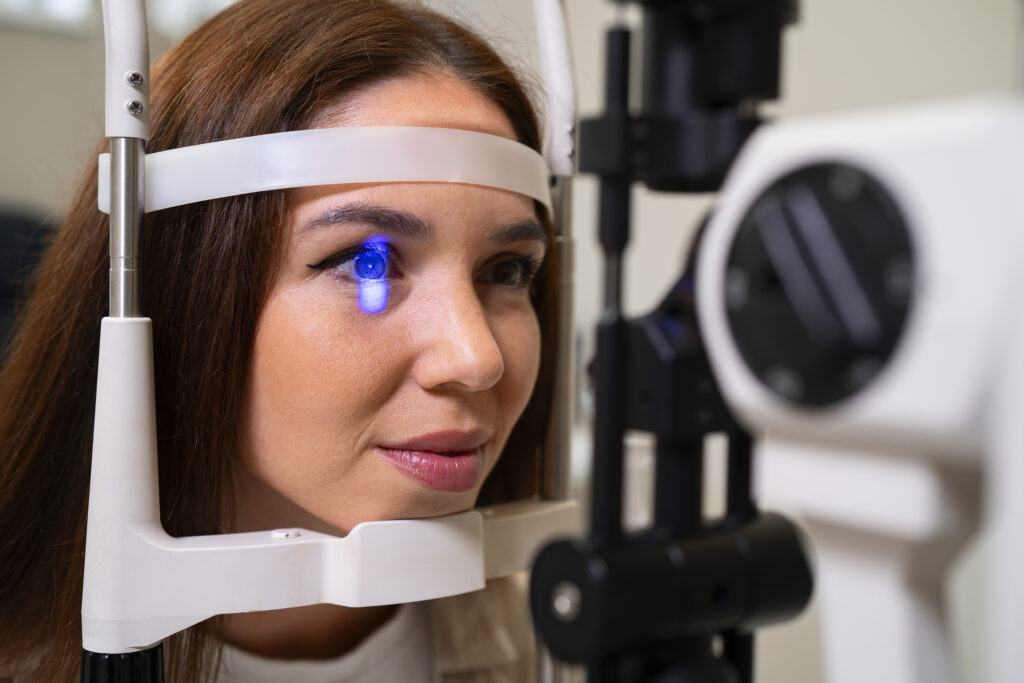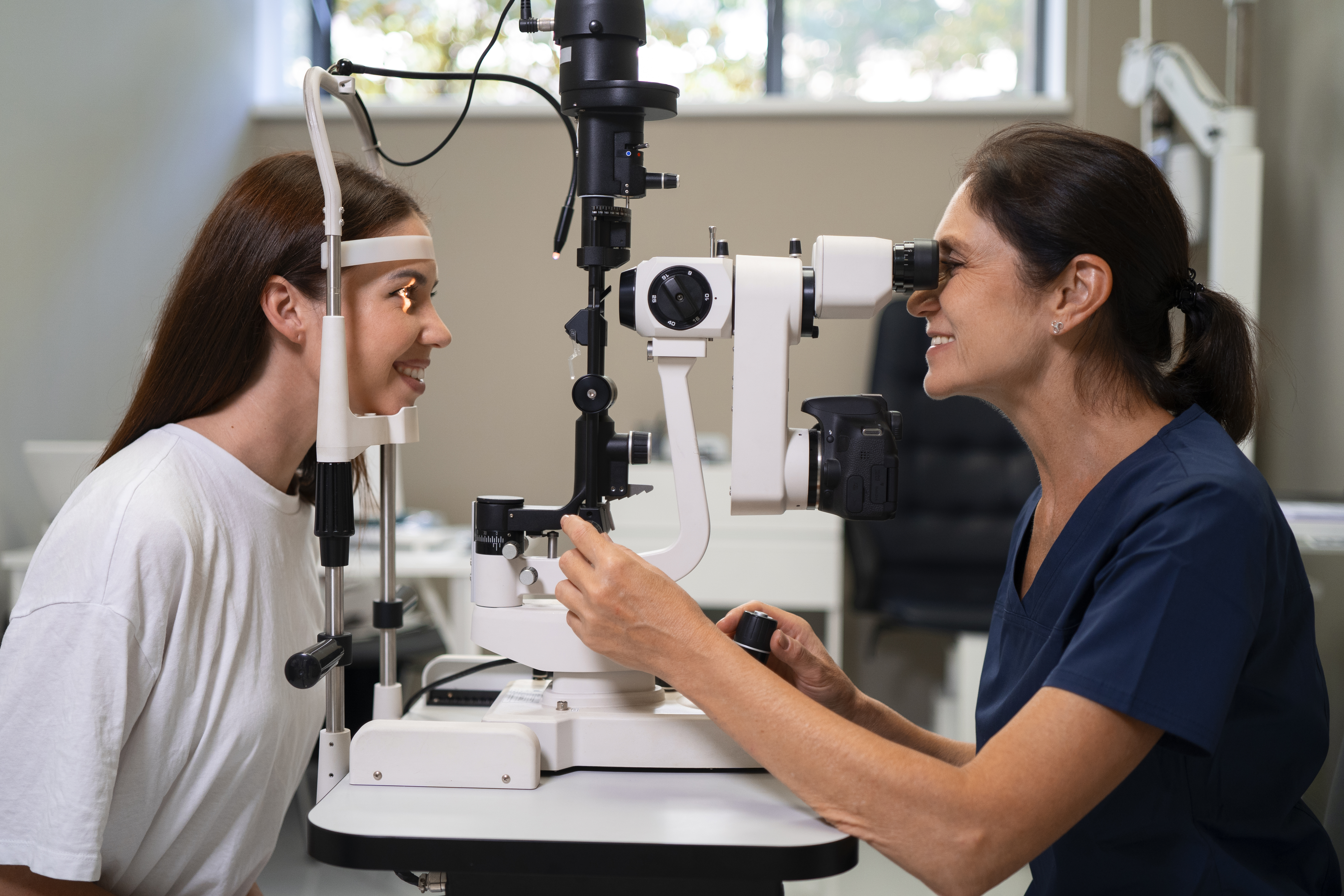When people think of laser eye surgery, the first procedure that usually comes to mind is LASIK. But did you know that another vision correction surgery—Photorefractive Keratectomy (PRK)—actually came before LASIK?
Both PRK and LASIK are effective treatments for refractive vision issues such as:
- Myopia (Nearsightedness)
- Hyperopia (Farsightedness)
- Astigmatism (Blurred or distorted vision due to corneal shape)
While both surgeries reshape the cornea to improve vision, the way they’re performed—and the recovery process—differs. For some patients, PRK may be the safer alternative when LASIK isn’t recommended. Let’s break down the differences, benefits, and considerations of LASIK vs PRK.
What Happens During PRK?
PRK surgery works by removing the thin, outer layer of the cornea (epithelium) before reshaping the tissue underneath with a precise excimer laser.
Here’s the step-by-step process:
- Numbing eye drops are applied, and an eyelid holder keeps your eye open comfortably.
- The surgeon gently removes the corneal epithelium.
- A laser reshapes the corneal tissue to correct refractive errors.
- A special bandage contact lens is placed over the eye to protect it and help with healing.

What Happens During LASIK?
LASIK uses a slightly different approach: instead of removing the epithelium, the surgeon creates a small flap in it, lifts it, and reshapes the cornea beneath.
Step-by-step process:
- Numbing drops and an eyelid holder are used, just like PRK.
- A laser creates a thin corneal flap.
- The surgeon lifts the flap and uses an excimer laser to reshape the tissue.
- The flap is repositioned back in place, where it heals naturally.
Recovery: PRK vs LASIK
Recovery is where the biggest differences show up between these two procedures.
PRK Recovery
- Healing takes a few days since the corneal surface needs to regenerate.
- Temporary discomfort, light sensitivity, and blurred vision are common.
- A protective bandage lens stays in place until the eye heals (usually several days).
- Most patients return to work within a week, but full recovery can take a month.
LASIK Recovery
- Recovery is typically much faster—many patients notice improved vision the same day.
- Discomfort is minimal and usually resolves within hours.
- Most people return to normal activities within 24 hours.
Risks and Side Effects
Both procedures are considered safe, but as with any surgery, there are potential risks.
Possible side effects include:
- Dry eyes for a few weeks to months
- Halos, glare, or night vision issues
- Under- or over-correction (rare)
- Infections or flap complications (more likely with LASIK)
Your surgeon will evaluate your eyes thoroughly to minimize these risks and determine which option is safer for you.

Who Is a Good Candidate?
You may qualify for LASIK if:
- You’re over 20 years old
- Your prescription has been stable for at least 1–2 years
- Your corneal thickness is within a safe range
- You don’t have certain eye conditions (like severe dry eye, glaucoma, or thin corneas)
PRK may be recommended if:
- Your corneas are too thin for LASIK
- You have larger pupils
- You participate in contact sports or jobs with high eye injury risk
- You want to avoid potential flap complications
Cost: PRK vs LASIK
Costs can vary, but here’s the general difference:
- PRK: Uses a single laser, making it slightly less expensive.
- LASIK: Involves two lasers (one for the flap, one for reshaping), usually making it costlier.
While most insurance plans don’t cover elective vision correction surgery, you may be able to use HSA or FSA funds. Some clinics also offer financing options to make the investment more manageable.
Pros and Cons at a Glance
| Procedure | Pros | Cons |
|---|---|---|
| PRK | Suitable for patients with thin corneas, no flap complications, long-term stability | Longer recovery, initial discomfort, higher infection risk in first few days |
| LASIK | Quick recovery, less discomfort, vision improves almost immediately | Not suitable for thin corneas, flap complications possible, higher chance of dry eyes |
PRK After LASIK
In rare cases, patients may need an enhancement procedure years after LASIK. Performing another LASIK surgery might not be safe, but PRK can often be performed as a secondary procedure.
Which One Is Right for You?
Ultimately, the choice between LASIK and PRK depends on your eye health, lifestyle, and goals. Both surgeries deliver excellent long-term results, but the best option should always be guided by a professional evaluation.
At Eyemastr, we believe your vision is worth the best care and technology available. Always consult with a trusted eye specialist before making your decision.


